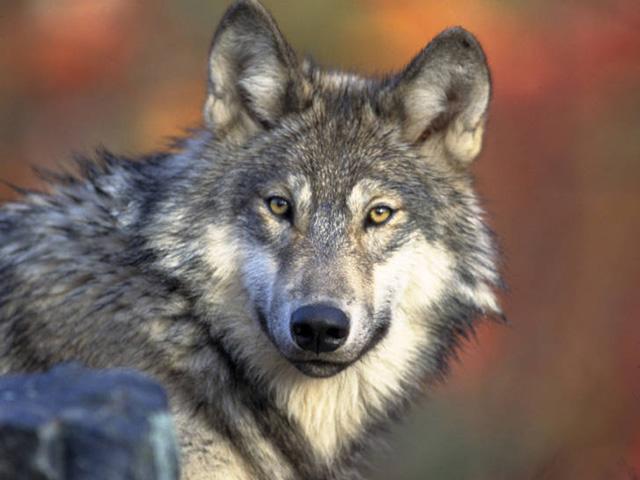Court Vacates Gray Wolf ESA Delisting
Federal Judge in California Vacates Trump-Era Rule That Delisted Gray Wolf as Endangered
LINCOLN, Neb. (DTN) -- A federal court on Thursday vacated a Trump-era rule that removed the gray wolf from the endangered list in the lower 48 states, sparking frustration from agriculture interests who say federal protections are not needed.
The Endangered Species Act status of the gray wolf has swung back and forth like a legal pendulum for decades, as agriculture, conservation and environmental interests have for years debated whether the species has recovered or not.
On Nov. 3, 2020, the U.S. Fish and Wildlife Service (USFWS) issued a final rule delisting the gray wolf because of its recovery in the northern Rocky Mountains and Great Lakes.
The Fish and Wildlife Service concluded that, while those particular populations occupy a fraction of their historical range, they are capable of sustaining viable wolf populations in the lower 48 states over time.
"However, similar to its previous rulemaking, the service did not adequately consider threats to wolves outside of these core populations," Judge Jeffrey S. White in the U.S. District Court for the Northern District of California, said in his ruling.
"Instead, the service avoids analyzing these wolves by concluding with little explanation or analysis, that wolves outside of the core populations are not necessary to the recovery of the species. In so concluding, the service avoided assessing the impact of delisting on these wolves. These deficiencies in the final rule are serious and weigh in favor of vacatur."
Livestock producers in Minnesota and other states that have gray wolf populations have for years faced challenges in protecting their animals.
According to data from the USDA Wildlife Services, between 1979 and 2018, Minnesota cattle farmers average a loss of nine adult cattle and 54 calves each year to gray wolves. During that 39-year period, Minnesota cattle farmers lost a total 363 adult cattle and 2,171 calves to gray wolf attacks.
P[L1] D[0x0] M[300x250] OOP[F] ADUNIT[] T[]
In a news release following the court's decision, Minnesota cattleman Joe Wilebski said wolf attacks put pressure on his business.
"One year, I lost 26 calves due to gray wolf attacks," he said. "As a producer, my top priority is the health and safety of my livestock. The consequences of gray wolf attacks go far beyond the immediate loss of livestock. When wolves attack animals, even if they aren't killed, it causes long-term effects on their overall health and well being."
The National Cattlemen's Beef Association and the Public Land Council said in a joint news release that the gray wolf population is recovered and no longer meets requirements for a listing.
Since being listed under the Endangered Species Act in 1974, the groups said, the gray wolf population has exceeded recovery goals by about 300%.
According to the USFWS website, there were 5,680 gray wolves in the lower 48 states as of 2017. The northern Rocky Mountain and Great Lakes regions account for 98% of that population. The USFWS has not updated those numbers since 2017.
The ESA does not protect the gray wolf population in Alaska, which ranges from 7,700 to 11,200 animals.
NCBA Executive Director of Natural Resources and Public Lands Council Executive Director Kaitlynn Glover said the ESA was not intended to be a "permanent management" tool.
"It's disappointing that environmental activism carried more weight than science in this case," she said in a statement. "Rather than ruling on due process and adherence to recovery criterion, Judge White chose to remand the rule and undermine one of the most successful ESA recovery stories in United States history."
American Farm Bureau Federation President Zippy Duvall said returning the gray wolf to endangered status doesn't match up with the species' status.
"The gray wolf exceeded recovery goals and should be celebrated as an Endangered Species Act success story," he said in a statement.
"The ESA is intended to promote species recovery and delisting, not to impose permanent protected status for animals that are now thriving. Today's ruling ignored ESA goals and threatens recovery efforts for other animals."
In May 2021, the NCBA, PLC, American Farm Bureau Federation and the American Forest Resource Council filed an amicus brief in the case.
The back and forth on listing and delisting the gray wolf spans several presidential administrations.
During the Obama administration, for example, the USFWS finalized a rule in 2011 delisting the gray wolf in the lower 48 states.
The rule was vacated by a district court and the U.S. Court of Appeals for the District of Columbia Circuit affirmed the decision on the basis that the service failed to adequately analyze and consider the effects of partial delisting and of historical range loss on the already-listed species.
Todd Neeley can be reached at todd.neeley@dtn.com
Follow him on Twitter @DTNeeley
(c) Copyright 2022 DTN, LLC. All rights reserved.






